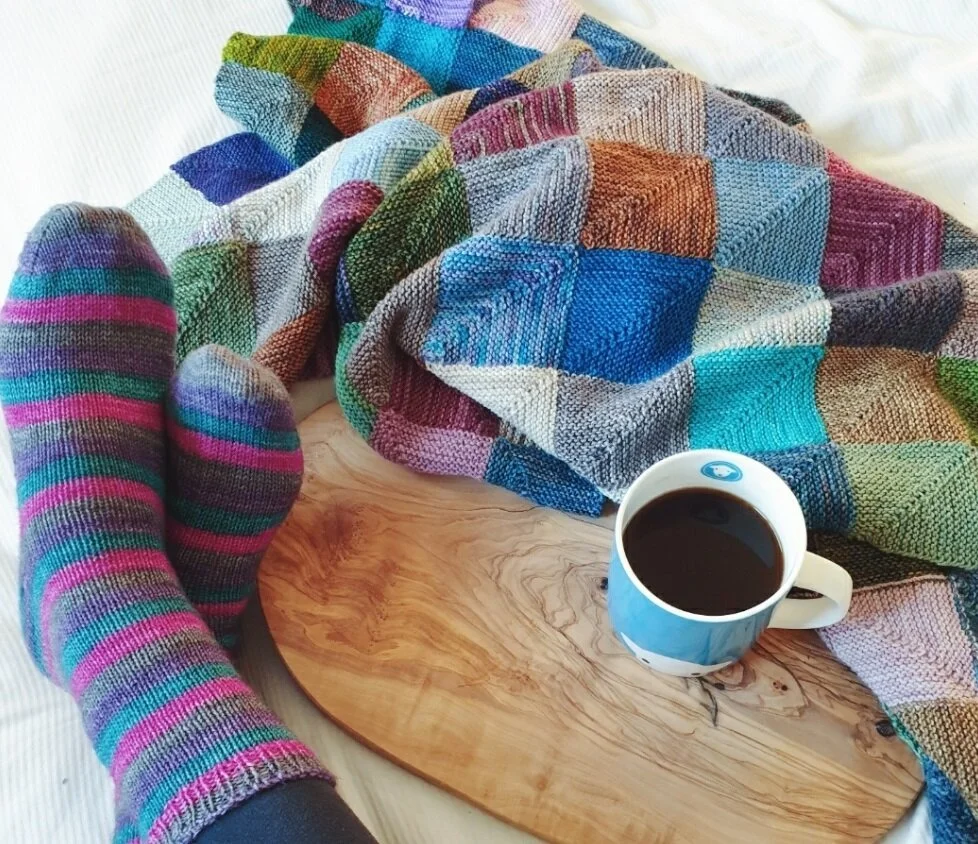I’m going to apologise in advance for this blog post which takes the form of a mini rant and isn’t in my usual style. If you’ve popped in looking for the knitting, please feel free to pass this one by and pop back tomorrow.
I’m well aware that in the knitting industry there is a perception that all knitters are lovely, and indeed the vast majority of them are. But there is a small but significant minority of knitters who I’m afraid are anything but. Now I am well aware that in saying this I am sticking my head above the parapet and I may well lose some customers or subscribers as a result. But I feel strongly about this and I feel that by pretending everything in the garden is rosy we are doing everyone a disservice.
What am I talking about here? One word - courtesy. Specifically courtesy when speaking to people online. It’s a well known fact that people behave different to each other online than they do in person and that comes as no surprise. What has surprised me though is the response to a recent event, where I offered a free copy of a shawl pattern if people signed up to receive my regular newsletter.
To recap slightly, I designed the Fuss Free Festival Shawl in conjunction with Fluph Shop and the Little Grey Girl for an Edinburgh Yarn festival collaboration. The shawl then went on general sale on Ravelry and I decided to offer it free for a limited time as an incentive for my email subscription. All was fine for several weeks and I had a steady stream of subscriptions, then by a stroke of fate the pattern appeared in the Ravelry news pages. By the wonders of Ravelry the shawl shot to the top of the Hot Right Now page and stayed there for 24hrs or so.
The volume of new subscribers became a flood and my poor email service struggled to keep up. Now I'm not for one second complaining about this. It was a huge boost to my mailing list and my profile and was very welcome. What did irk me though was the tone of some emails and messages I received from people trying to access their free pattern.
These are a selection of genuine emails I received during a 12hr period - anonymised for obvious reasons.
“I signed up to your newletter expecting to receive your pattern as promised. It has NOT arrived”
“I really want your pattern but haven’t got it yet. Where do I get it?”
“ Why don’t you just put the pattern free on ravelry and then I can get it from there. I don’t want to give you my email address”
“On ravelry you promised a free copy of the shawl pattern. I have not received it. Is this some sort of scam????
“My pattern has not arrived as you promised. Please rectify this immediately”
I kid you not. These all genuinely landed in my inbox. The sender of the last email proceeded to send 4 or 5 more in tones of increasing anger at 1 hour intervals. Ending with a threat to report me to the unspecified authorities for fraud. Unfortunately they were in a different time zone to me and I was asleep.
Now obviously, people may get frustrated if they don’t receive something they have been promised. But on the Ravelry page and the subsequent email chain I did explain in detail how to access the free pattern. I think the Mailchimp did get a bit overwhelmed at one point and so the automated responses may have been a little slow, which didn’t help.
But the immediate reaction, to dash off a hasty and yes, rude email shows a basic lack of courtesy and a lack of appreciation that they are dealing with a real life human being. A real person who has worked an 8-hour day outside the home. A real person who has dealt with homework crises, mundane domesticity and a dead washing machine. A real person who is presently trying to achieve the impossible of 8 hours quality sleep.
I did receive many lovely thank you messages too - which outnumbered the rude ones by quite some amount. I’m not asking for sympathy and I’m aware that in the scheme of things this is a very small thing.
Nevertheless I feel it shows a real lack of awareness on the part of a very small number of people. I’m sure that none of those people would have been intentionally rude to me in person, but put a keyboard in the way and their communication style was very different. And at the end of the day, this amount of angst over something which can be purchased for just under £3.50 (around $5) seems to be lacking somewhat in perspective.
Courtesy. A small word but such an important one. Please and thank you cost nothing whether you are speaking online or in person.
There, rant over.
As you were.






